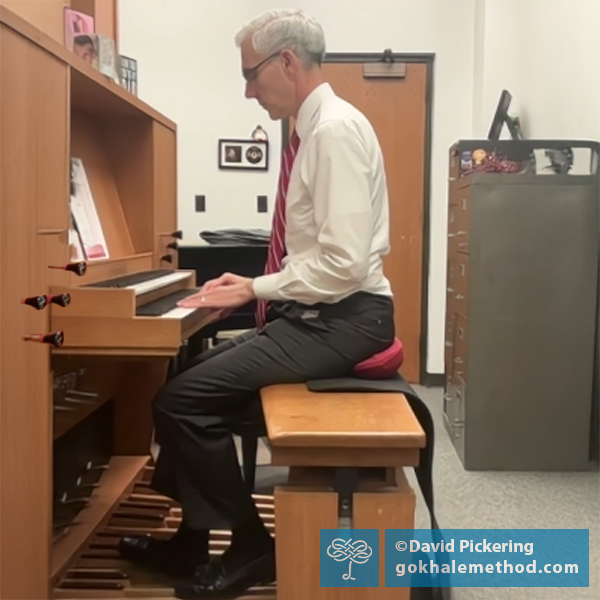I came upon the Gokhale Method® very much by chance. Years ago I worked with a pianist named Sheila Page who was trained in a technique which was founded by the American music teacher Dorothy Taubman. Taubman observed people with high levels of playing ability, found out what they did so well, codified it into a method and taught it. At a Taubman workshop I heard of Peter Egoscue, who had devised a therapeutic exercise program; I worked from his book when I hurt in places, and had some improvement with that. Doing further research for pain relief, I then encountered Esther Gokhale’s name. Not too long after, my son and I drove together to attend a one-day Immersion course Esther was teaching in Boulder, Colorado.
When Is It Good to Pull Back Your Shoulders?
This is the second post in our series on shoulder positioning. Read Part 1 here!
Typing with shoulders too far forward.
Often, in industrialized cultures, the shoulders are slumped or held forward. There are so many daily tasks in the modern world that make it all too easy for these bad habits to set in: holding our arms out front for hours with poor shoulder placement while we are typing, gaming, driving, and so on. Over the years this is likely to cause various problems:
Impingement, bursitis, wear-and-tear
Reduced circulation to the arms
Compromised breathing patterns
Reduced athletic performance, increased injuries
Hunched upper back and forward head
Common pitfalls in getting the shoulders

